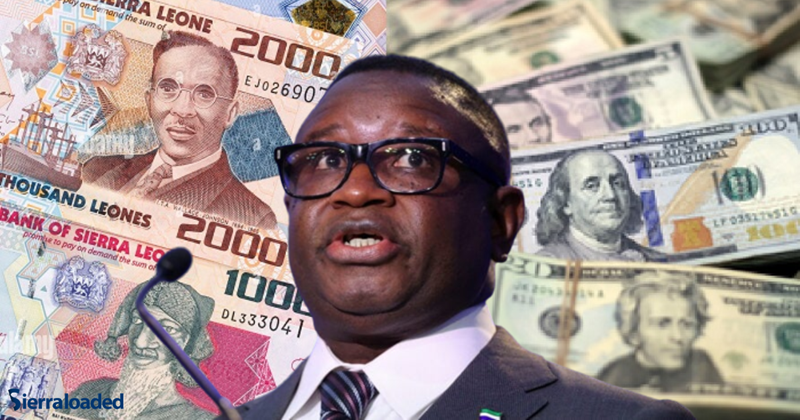A while ago, I was swiping through WhatsApp statuses on my phone, and I came across a particular status that read, “Sierra Leoneans are paid in Leones but made to pay for goods and services in the equivalent of the dollar. There’s a huge structural disconnect! This is wartime!” This status epitomizes the palpable frustration marinating among many Sierra Leoneans.
A dangling economic dilemma has emerged, crippling low-income earners in their struggle to make ends meet. While many citizens are paid in the LEONE currency, they are often required to pay for goods and services in US dollars or its equivalent. This structural abnormality has persisted for too long, and the government has yet to address it. This situation has far-reaching implications for the country’s economy and the daily lives of its people.
The depreciation of the Leone has been a persistent issue, worsened by inflation and economic mismanagement. Banks and other financial institutions have allowed certain goods and services to be paid for in foreign currencies, primarily the US dollar. This move has further weakened the local currency and created a dependency on foreign currencies for essential transactions.
In an attempt to address these structural issues, the Government of Sierra Leone introduced new legal tenders and redenomination of the Leones, along with the implementation of the Goods and Services Tax (GST). Despite these measures, the Leone currency has continued to lose value, and the government has had to resort to allowing the use of foreign currencies for certain transactions.
Compounding this problem is the massive promotion and demand for the use of dollars over the Leone in most transactions, especially for paying house rents and the like. This situation has stifled the financial growth of many struggling households, preventing them from affording quality lifestyles. The Leone has a lower value compared to the dollar. Currently, the Xe Currency Converter values 100 USD at 2,275,991.7 New Leones, while Western Union values 100 USD at 2378.00 New Leones. These exchange rates could pass for official transactions. However, the black market values 100 USD at about 2400.00 New Leones thereabout.
The dilemma for those who are paid in Leones and required to spend in dollars is akin to testing deep waters with both feet. It is too risky and demotivating for low-income earners, particularly public sector workers. They barely survive by the skin of their teeth daily. The dollar has repeatedly shown a higher value over the Leone, giving those who earn in dollars greater purchasing power, unlike Leone earners who are caught in an economic struggle.
This structural pandemonium has become evident as the government has overlooked or underestimated the burden many Sierra Leoneans carry by not unifying a single exchange rate to trade on and monitor the prices of goods and services. A colleague exclaimed that “there is hardly an official rate set by our central bank, including an interbank rate (for banks to lend to one another), a rate for import and export, a rate for international money transfer companies, and a black market rate.”
With this expression of the obvious, every right-thinking Sierra Leonean, whether at home or abroad, should be concerned. To be clear, no right-thinking Sierra Leonean is asking the government to provide their daily bread but to create an enabling environment where citizens can be economically capable of handling their bills without being robbed by the dollarising syndrome.
Welcome to 2025, and wishing you a LEONE spending year!



 5 Comments
5 Comments 










Well said.
Cars are sold in dollars, some houses are rented in dollars, some land are sold in dollars, some houses are sold in dollars.
You nailed it all. I also seeing business people who are crossing the boarders to buy businesses in our neighboring countries, whenever they want to go they should change the Leones into dollars.
Our greatest problems in Sierra Leone are ignorance, selfishness and wickedness not the devil. That’s why everybody is trying as hard as possible to leave this country of ours.
All of this is happening because we, the citizens, have divided our nation through tribalism, religion, and ill will. This division allows politicians to exploit us every day.
In Sierra Leone, foreigners are given more privileges than citizens. For example, a foreign employer may pay a citizen only Nle 200 per month. Which other country treats its citizens this way? The government grants 99% of its rights to foreigners instead of its own people.
Citizens need to be wise. It doesn’t matter what tribe you belong to or which party you support; we must unite for the betterment of our country.
Please when will the severance benefits payment be effective for institution of higher education?